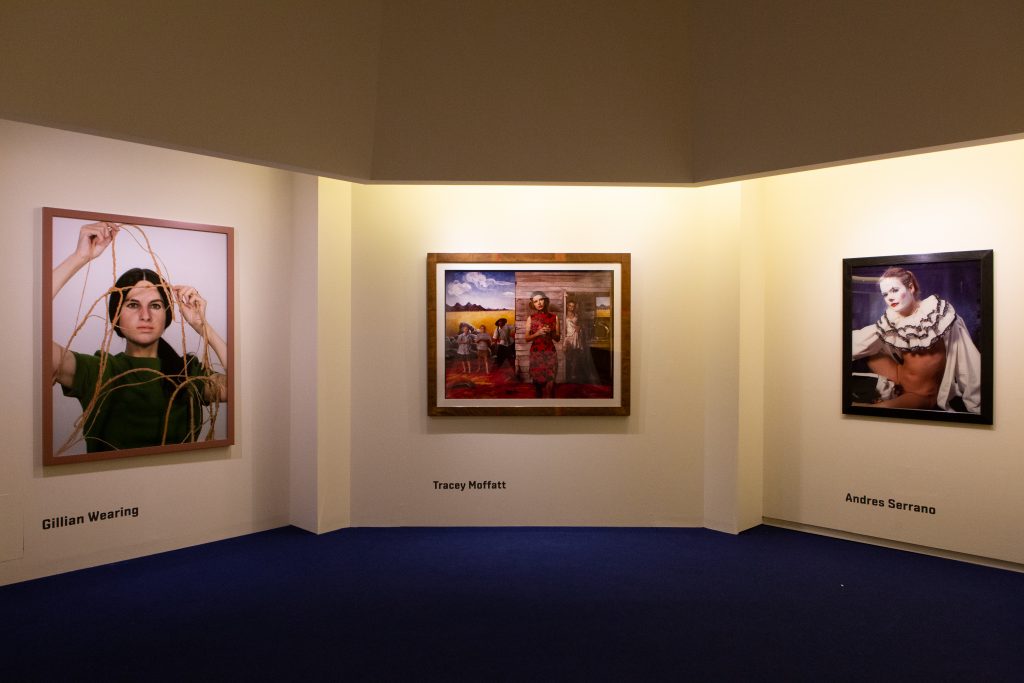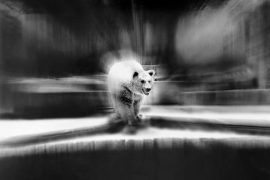by Azzurra Immediato
_
Exhibitions and museums can now reopen, in a very peculiar way and with strange opening hours, but it feels like emerging from a suspended and metaphorical dimension that has diverted our perception for almost a year. Among the exhibitions that from 10 February will have the opportunity to welcome gatherings of ideas and not bodies – those who have to do with culture would never jeopardize the freedom of others, ça va sans dire – there is True Fictions, “the first retrospective ever made in Italy on the phenomenon of staged photography, the trend that since the 1980s has revolutionized the language of photography and its place among the contemporary arts”, set, imaginatively, in Palazzo Magnani in Reggio Emilia, curated by Walter Guadagnini as part of Fotografia Europea Festival. With the reopening from February to March, the exhibition turns into an unexpected “promise of happiness” to say it with Stendhal’s words.
The “staged” theme is that same language that has merged photography and cinematography not only from a technical point of view but, also, from an ab origine conceptual perspective. The disturbing element, the short circuit, the idea that “photographic truth” is questioned in a completely illusory yet credible way, due to a visual, compositional and perceptive paradox, is supported by alienating details that strike the viewers by putting them on guard against what photography places in front of them, in its full material tangibility, in its so-called “translation of reality”. This feeling, aleatory and inexplicable in some ways, accompanied the visitors from the first steps taken through the exhibition, in the days of its opening last autumn, in a peculiar moment in history, in which the much-hated fake news, often linked to the US elections, filled the world with daily information.

So we move along the works by Emily Allchurch, James Casebere, Bruce Charlesworth, Eileen Cowin, Thomas Demand, Bernard Faucon, Joan Fontcuberta, Samuel Fosso, Julia Fullerton Batten, Teun Hocks, Chan-Hyo Bae, Alison Jackson, Yeondoo Jung, David Lachapelle, David Levinthal, Hiroyuki Masuyama, Tracey Moffatt, Yasumasa Morimura, Nic Nicosia, Lori Nix, Erwin Olaf, Jiang Pengyi, Andres Serrano, Cindy Sherman, Laurie Simmons, Sandy Skoglund, Hannah Starkey, Hiroshi Sugimoto, Paolo Ventura, Jeff Wall, Gillian Wearing, Miwa Yanagi, arranged according to a precious and absolutely “staged” setting: the museum space is transformed into a magic box in which what the bystander observes, suggested by the artists, triggers the doubt of wonder, uncertainty towards given truth. But given by what? The photographs on display, in their formal refinement, show that no truth is incontrovertible if fantasy and imagination enter the scene, to the point of making what is observed “more true than truth” – a lesson that comes from seventeenth-century painting.
True Fictions takes a further step: photography as a mirror of reality is transformed into a distorting mirror, in a stupendous and stupefying way, which changes the already known and gives space to a fascination for the unknown, capable of philosophically undermining the gradient of truth. Everything becomes subjective, the reading of the images extends into the here and now a continuation of neuronal perceptions which are revolutionary, in the context of “normal” fruition. If it is true that a work of art turns out to be a reflection of the research of the artist but also of the psyche of the observer –it is neuroscience that says it – the works of this exhibition move the perceptive and interpretative index far beyond, offering the dystopian elements a leading role.
The over one hundred works in the exhibition suggest, alarm, open up an unusual vision that allows us to glimpse fragments of that pivotal moment that opened the doors of art to photography. If this, today, may appear as a given fact that does not require further investigation, you will only need to walk the halls of Palazzo Magnani to see – starting from the dialogue between the works, the layout, the architecture and the decorations of the building itself – how much what had been entrusted only to pictorial and sculptural art or to cinema, has managed to enter forcefully but with extraordinary ability, into photography.

Everything is imaginative, fictional characters relate to figures of contemporary history portrayed in a really thought-provoking way. The transformation is there, in front of the inquiring gaze of the public, a gaze which, however, suddenly yields to the imaginative and lets itself be carried away by invention, by the amazement of wonder, without the need to ask what the role of truth is, as there is more at stake. And it’s here is that staged photography presents itself as “the dream machine”, capable of producing the unimaginable and in doing so, across the exhibition, you will discover the progress made by technology in this field, while reality becomes, inexorably, a stage.
“But that’s the way things in life go: one thinks of playing their part in a show and one does not even imagine that on the stage in the meantime, by stealth, they have changed the scenario and without knowing it one finds oneself in the middle of a completely different show.” (Milan Kundera)
Is it truth or fiction? It’s True Fictions. To you readers, discover the mystery by visiting the exhibition.

TRUE FICTIONS – AI CONFINI DELLA REALTÀ
Palazzo Magnani
Corso Garibaldi, 29, Reggio Emilia
New dates from 10 February to 4 July 2021
Wed, Thu and Fri: 14.00 – 20.00
February 8, 2021




